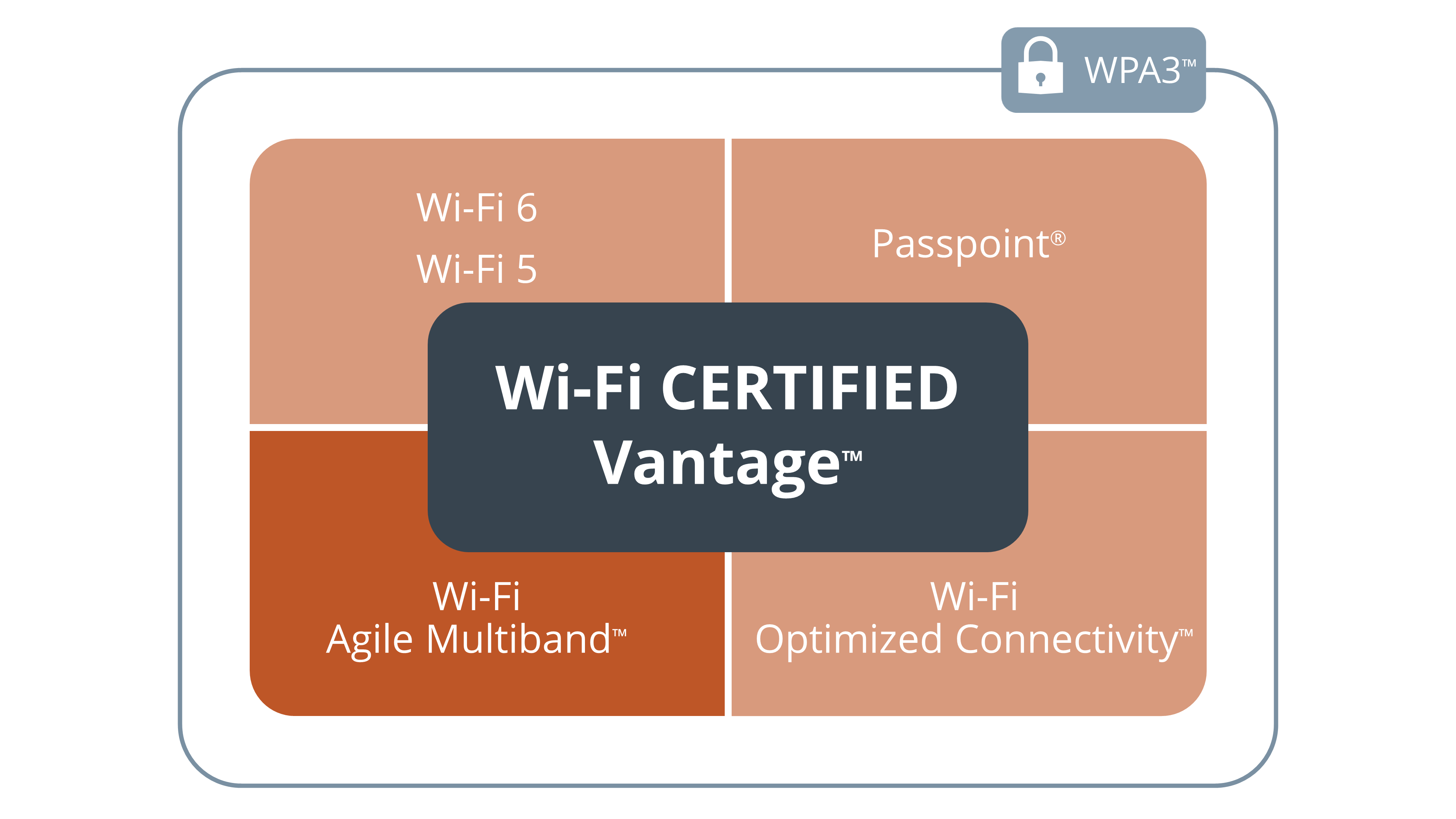
Wi-Fi® 네트워크를 위한 효과적인 리소스 관리
Wi-Fi CERTIFIED Agile Multiband™는 Wi-Fi 네트워크 환경의 효과적인 관리를 지원하며 Wi-Fi 기기들이 변화하는 Wi-Fi 네트워크 상태에 능동적으로 대응할 수 있도록 해줍니다. 향상된 리소스 활용으로 Wi-Fi 네트워크 로드 밸런싱을 지원하고 용량을 증대시켜 엔드유저에게 최상의 Wi-Fi 경험을 제공합니다. 모바일 폰, 스마트 TV, 태블릿 등의 클라이언트 기기들이 인프라 장치와 정보를 교환하여 다음과 같은 이점을 제공합니다.
- 지능적인 액세스 포인트, 대역, 채널 선택 결정
- 혼잡한 대역 또는 AP 내의 리소스 경쟁 제거
- 까다로운 음성 및 비디오 애플리케이션의 경우에도 서비스 중단 최소화
- Wi-Fi 환경 변화에 관계없이 고품질 서비스 제공
Wi-Fi Agile Multiband™는 2.4 GHz, 5 GHz, 6 GHz를 포함한 여러 주파수 대역을 효율적으로 사용하도록 지원하며 주파수 및 네트워크 리소스 관리 향상, 네트워크 로드 밸런싱, 이동성 증대와 최상의 사용자 경험을 실현하는 메커니즘을 제공합니다.
다이나믹 네트워크 모니터링: AP와 클라이언트 기기들이 Wi-Fi 네트워크 현황에 대한 정보를 계속해서 공유합니다.
인텔리전트 스티어링(Intelligent steering): Wi-Fi 환경이 혼잡해지면 AP가 클라이언트 기기에 다른 AP, 주파수 대역, 채널을 제안합니다.
신속한 네트워크 전환: 클라이언트 기기가 다른 AP, 대역, 채널로 로밍하기로 결정하면, 신속하고 원활하게 연결이 이루어집니다.
표준기반 기술로 인텔리전트한 접근방식과 상호운용성 제공
Wi-Fi Agile Multiband는 표준기반 기술로서 다양한 벤더 기기들에 대해 향상된 네트워크 관리를 제공합니다.
Wi-Fi Agile Multiband 기기를 지원하는 기술은 다음과 같습니다.
- IEEE 802.11k: AP와 클라이언트들이 Wi-Fi 환경에 대한 정보를 공유하도록 합니다.
- IEEE 802.11v: 네트워크 정보를 사용하여 클라이언트 로밍 결정을 지원하고 네트워크 전반을 향상시킵니다.
- IEEE 802.11u: 클라이언트 기기가 다른 네트워크에 연결하기 전에 정보를 수집하도록 합니다.
- IEEE 802.11r: Wi-Fi 네트워크 내에서 신속한 AP 간 전환이 이루어지도록 합니다. (옵션)
- Wi-Fi Alliance 정의 기술: 교환된 정보를 보완하고 선호 채널, 대역, AP를 식별하여 인텔리전트 Wi-Fi 네트워크 관리를 향상시킵니다.
Wi-Fi Agile Multiband는 매니지드 네트워크에서 사용자 경험을 획기적으로 향상시키는 기술들로 이루어진 Wi-Fi CERTIFIED Vantage™의 핵심 요소입니다. Wi-Fi Vantage™ 기기는 간소화된 인증과 Wi-Fi Agile Multiband의 효율적인 리소스 관리, 엔터프라이즈급 보안, 고성능 Wi-Fi를 통해 까다로운 네트워크 환경에서 사용자 경험을 향상시킵니다.



